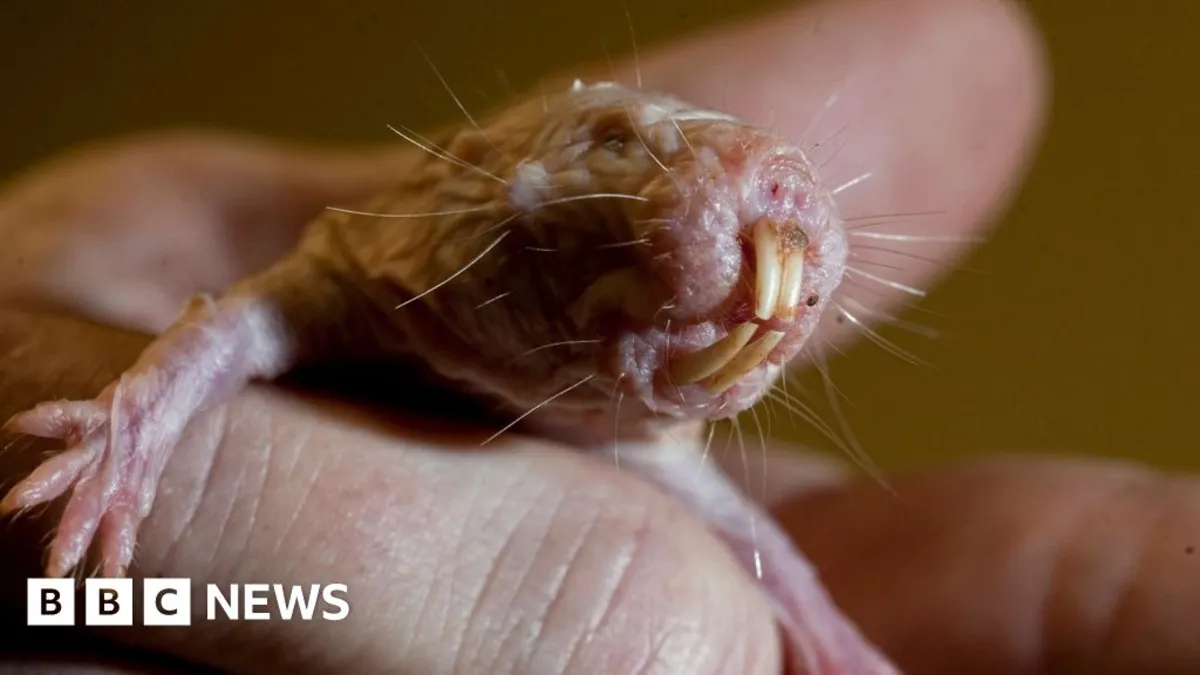
Among the most peculiar creatures on the planet, the naked mole rat stands out with its unique appearance and fascinating biology. These weird, bald, subterranean rodents resemble sausages with teeth and have recently unveiled a significant genetic secret that could explain their remarkable longevity. A groundbreaking study has revealed that these extraordinary animals possess a unique DNA repair mechanism that contributes to their lifespan of nearly 40 years, making them the longest-lived rodents in the world.
Published in the prestigious journal Science, the new findings illuminate why naked mole rats exhibit resistance to various age-related diseases. These remarkable creatures are known for their immunity to conditions such as cancer, brain deterioration, spinal cord degeneration, and arthritis. This resistance has piqued the interest of scientists who aim to unravel the mysteries behind their unique biological makeup.
The study, led by a dedicated team from Tonji University in Shanghai, China, centered on the crucial process of DNA repair. DNA, the fundamental building block of our genetic material, is susceptible to damage. When such damage occurs, cells initiate a repair mechanism that utilizes an undamaged strand of DNA as a template to mend the break. The research specifically focused on a protein called c-GAS, which plays a significant role in this damage sensing and repair system.
In humans, the c-GAS protein can hinder the DNA repair process, potentially leading to increased cancer risk and a shortened lifespan. However, in naked mole rats, researchers discovered that this same protein functions differently. Instead of hampering repair, it facilitates the mending of DNA strands, thereby preserving the integrity of the genetic code within each cell. This remarkable adaptation highlights how evolution has shaped the biology of naked mole rats to promote longevity.
Professor Gabriel Balmus, who studies DNA repair and aging at the University of Cambridge, emphasized the excitement surrounding this discovery. He likened c-GAS to a biological Lego piece—while humans and naked mole rats share a similar structure, the slight differences in their connectors lead to vastly different functions. Over millions of years, naked mole rats have seemingly reprogrammed this protein to benefit their longevity.
This groundbreaking discovery raises fundamental questions about evolutionary biology: How did evolution modify this protein to perform in reverse? What specific changes occurred during this process? Furthermore, is this phenomenon an isolated case or indicative of a broader evolutionary trend? Most critically, scientists are eager to explore how the biology of naked mole rats can inform strategies to enhance human health and extend the quality of life as we age.
Professor Balmus stated, “If we could reverse-engineer the naked mole rat's biology, we might develop much-needed therapies for an aging society.” As research continues, the potential for translating these findings into medical advancements holds promise for improving healthspan and longevity in humans. The naked mole rat's extraordinary adaptations may pave the way for new approaches in the fight against age-related diseases.